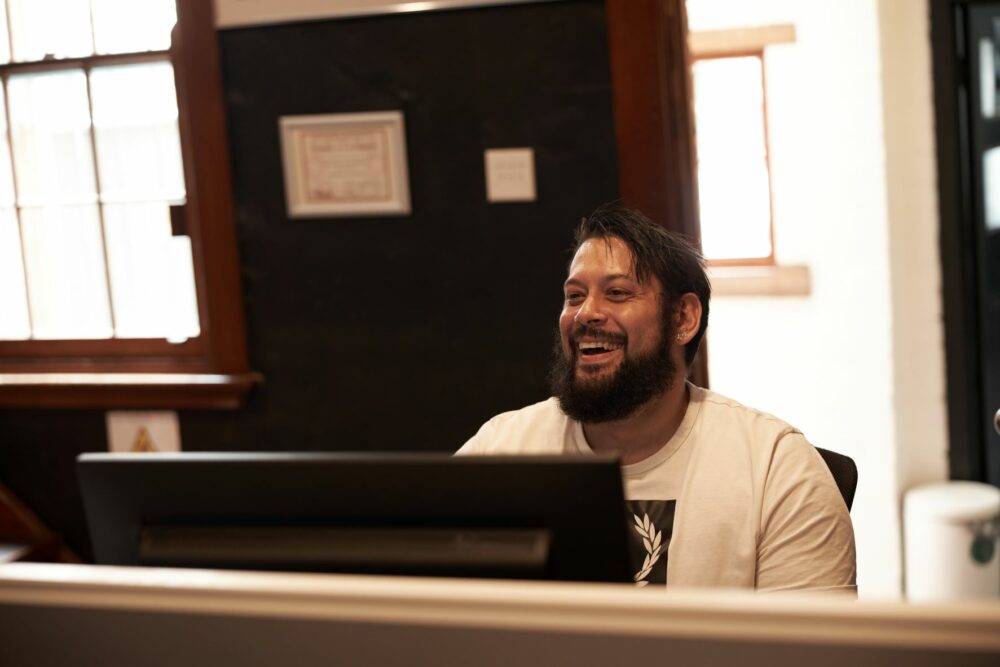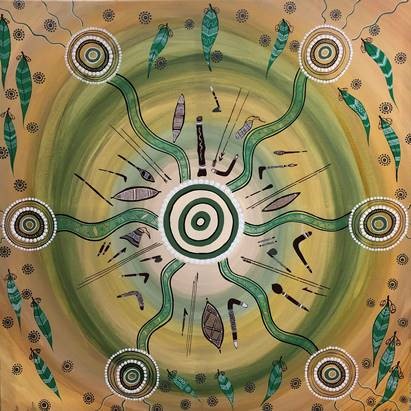Our Story
Learn why we exist

A disproportionately high number of people who access the Haymarket Foundation’s services identifies as being First Nations.
Staff member Levii Griffiths (pictured) says being an Aboriginal worker allows for an immediate connection.
Clients who have Aboriginal and Torres Strait Islander backgrounds want to see culturally diverse staff. It means they want to reach out more. It is about connecting with culture and community: there are often just a few degrees of separation.
That trust extends to other areas. It means that I can make recommendations and these clients are more likely to take that on. There is a level of trust and rapport from the get-go.
Having said that, the Haymarket Foundation’s Bourke Street Program is a post-rehabilitation residential living skills program for men from a range of backgrounds who are recovering from problematic substance use. We use a biopsychosocial model in areas around recovery skills, physical fitness, mental health, self-care, living skills, housing, education and employment.
This is a unique program and we’re proud to see so many of the men go on to rebuild their lives and reconnect with their families.
Drugs and homelessness are closely interconnected. The majority of people coming into our service have nowhere to go after rehab: they have no fixed address. Their aim is to get their own housing – and we help them do that and get other skills to make sure they stay there long-term. That’s why it’s a nine-month residential program.
We want to build the program so that people never have to access the service again – that this is the last service that they ever use.
In 2021, we completed a grant to improve access and equity to the program for Aboriginal and Torres Strait Islander clients.
There were a number of recommendations, but amongst them, was changing our language and imagery. We commissioned Wiradjuri artist Kylie Cassidy (see image below) – the circles around the outside of the image represented the houses of the Bourke Street Program. Kylie also did the artwork for the Roosters’ 2020 jersey.

The proportion of Aboriginal men seeking out the service has grown. Part of that is the grant, but I also like to think that it’s also got something to do with hiring Aboriginal staff! The word-of-mouth recommendations have led to people from as far away as Moree and Coffs Harbour contacting us.
One Aboriginal guy was socially awkward and had difficulty talking with others. I was so pleased to see him reaching out to me and others during his recovery and now he’s finished the program, got a house, a job and he’s stayed connected with us. That just makes everything we do worthwhile.
Another Aboriginal client had been in and out of institutions for 10 years, with some time in recovery. Until he came to us, he struggled to find accommodation and with being sober. Now he has completed our program, he has his own place, part-time work and is completing a degree.
Please give generously to help people experiencing homelessness at the Haymarket Foundation
PS: Any gift over $2 is tax-deductible.
Thank you for your kindness and compassion!
Photo credit: Joel Pratley